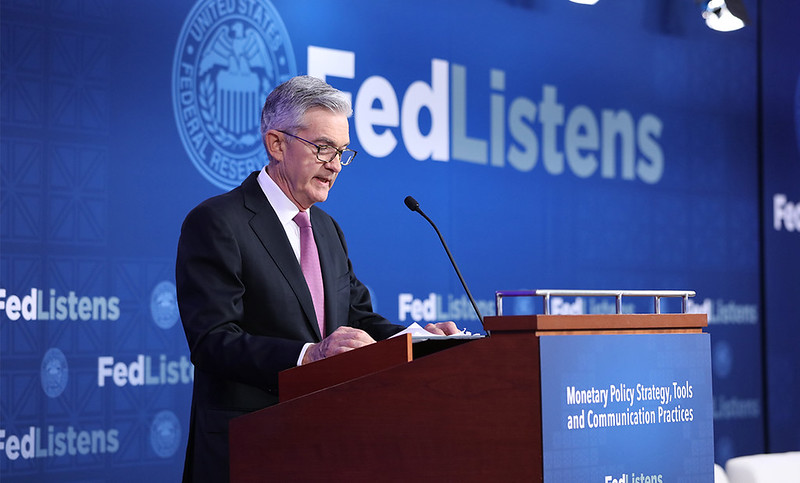
(Photo : Flickr)
US Federal Reserve chief Powell
The U.S. Federal Reserve launched its much-anticipated rate-cutting cycle on Wednesday, implementing a larger-than-expected 50-basis-point reduction in its benchmark rate. Fed Chair Jerome Powell emphasized the decision was intended to signal the central bank's dedication to maintaining a strong labor market now that inflation has cooled.
"We made a good strong start, and I'm very pleased," Powell said during a press conference following the rate cut, which lowered the target range to 4.75%-5.00%. He noted growing confidence that the worst of inflation had passed, calling the move a logical step both economically and from a risk-management perspective.
Diane Swonk, chief economist at KPMG, highlighted the significance of the Fed's action: "A soft landing is within reach, which would seal Powell's legacy as Fed Chairman."
In addition to the immediate rate cut, Fed policymakers projected further reductions, expecting the benchmark rate to drop by an additional 50 basis points this year, 100 points next year, and another 50 points by 2026. However, they cautioned that long-term forecasts remain uncertain.
The Fed's decision, which comes just weeks before the U.S. presidential election, drew muted reactions from the candidates.
Vice President Kamala Harris, the Democratic nominee, called the move "welcome news" but acknowledged that high prices continue to strain working families. On the other hand, Republican candidate Donald Trump, who appointed Powell during his presidency, suggested the size of the cut could indicate deeper economic concerns.
"To cut it by that much, the economy would be very bad, unless this is all about politics," Trump said.
Powell countered that the economy remains robust, with the 4.2% unemployment rate and other indicators showing no cause for alarm. However, he acknowledged concerns over delayed impacts of monetary policy changes, saying, "The time to support the labor market is when it's strong, not when layoffs begin."
Since July, the Fed had held rates steady between 5.25%-5.50% following an 18-month rate-hike campaign to tame inflation, which hit a 40-year high in 2022. While Powell refrained from declaring victory over inflation, he said it was now close to the Fed's 2% target.
Following the announcement, U.S. stocks initially rose but later fell, while the dollar strengthened and U.S. Treasury yields climbed. Traders also priced in more cuts than the Fed had projected, expecting rates to be in the 4.00%-4.25% range by the end of the year.
"The Fed ended the pause with a bang," said Brian Jacobsen, chief economist at Annex Wealth Management. "Cutting by 50 basis points and signaling more cuts this year was a bold move, and it's generating debate."
Inflation, as measured by the Fed's preferred metric, is currently about half a percentage point above the 2% target. Projections suggest it will fall to 2.3% by year's end and 2.1% by 2025. The unemployment rate is expected to hold steady at 4.4% through 2025, with economic growth projected at around 2% for the next two years.









